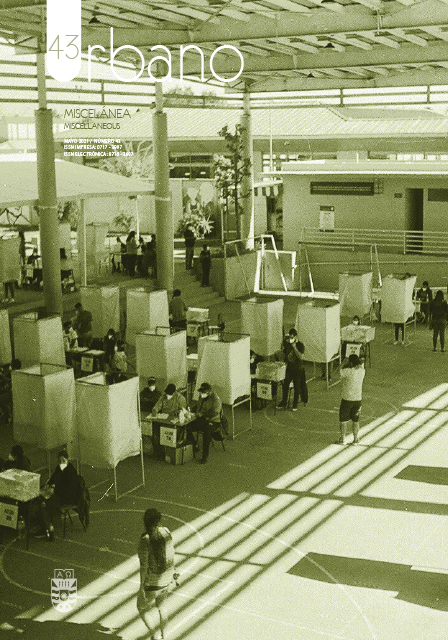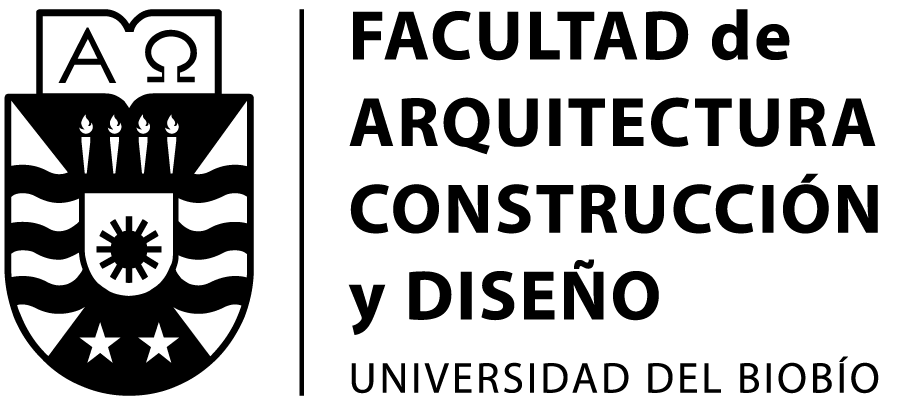Train stations as nodes and places: the potential of trains for transit-oriented urban development in Santiago, Chile
DOI:
https://doi.org/10.22320/07183607.2021.24.43.08Keywords:
railway stations, railways, trains, urban planning, urban transportAbstract
In Latin American cities, the train has played a less relevant role in recent decades as a structuring element of urban development. As with other means of mass transportation, railroads can be the object of strategies that foster the integration of public transport and land use, to guide urban development towards more sustainable futures. Considering that in Chile suburban rail services are gradually being reactivated around the main cities, it is worth asking whether rail transport can contribute to forms of transport-oriented urban development in the Chilean context as well. In this way, this article actually explores the urban role of train stations and their potential as options of transit-oriented development. Focusing on the case of Santiago, the article analyzes train stations by applying the node-place model, which examines each of them based on their role as a node (i.e., how many destinations they allow reaching) and as a place (considering the diversity and intensity of activities that take place in their vicinity). The results show the limited urban role that railway stations play in the context of Chilean capital, highlighting a certain homogeneity with respect to the levels of accessibility or the appeal of the urban environments of each station. The application of the node-place model shows that the train has an untapped potential for the urban development of the places it crosses throughout Santiago, and confirms the potential role of stations as small polarities at the neighborhood and municipal scale.
Downloads
References
BERTOLINI, L. (1999). Spatial development patterns and public transport: the application of an analytical model in the Netherlands. Planning Practice and Research, 14(2), 199-210. DOI:10.1080/02697459915724
CASET, F., DERUDDER, B., WITLOX, F., TEIXEIRA, F. M. Y BOUSSAUW, K. (2019). Planning for nodes, places, and people in Flanders and Brussels. Journal of Transport and Land Use, 12(1), 811-837. DOI: https://doi.org/10.5198/ jtlu.2019.1483
CERVERO, R. (2013). Linking urban transport and land use in developing countries. Journal of transport and land use, 6(1), 7-24. DOI: https://doi. org/10.5198/jtlu.v6i1.425
CERVERO, R., GUERRA, E. Y AL, S. (2017). Beyond mobility: Planning cities for people and places. New York: Island Press.
CURRIE, G. (2010). Quantifying spatial gaps in public transport supply based on social needs. Journal of Transport Geography, 18(1), 31-41. DOI: https://doi. org/10.1016/j.jtrangeo.2008.12.002
DEJTIAR, F. (2017). Estación Mendoza: la sustentabilidad como guía para la generación de espacio público. Plataforma Arquitectura, 15 de mayo. Recuperado de https://www.plataformaarquitectura.cl/cl/871116/estacion-mendoza-la-sustentabilidad-como-guia-para-la-generacion-de-espacio-publico
EFE (2019). Memoria anual Tren Central 2019. Recuperado de https://www.efe. cl/wp-content/uploads/2020/06/Memoria-Anual-Tren-Central-2019.pdf
HAYWOOD, R. Y HEBBERT, M. (2008). Integrating rail and land use development. Planning Practice & Research, 23(3), 281-284. DOI: https://doi. org/10.1080/02697450802421397
JAMME, H. T., RODRIGUEZ, J., BAHL, D. Y BANERJEE, T. (2019). A Twenty-Five- Year Biography of the TOD Concept: From Design to Policy, Planning, and Implementation. Journal of Planning Education and Research, 39(4), 409-428. DOI: https://doi.org/10.1177/0739456X19882073
KATZ, C. ARRASATE, M. I., MORENO, O., QUINTANILLA, J., ORTÚZAR, J. D. D. Y BETTANCOURT, P. (2019). Hacia una política de diseño integrado de infraestructura multipropósito: marco referencial de diseño para corredores de transporte ferroviario. En Irarrázaval, I., Piña, E., Jeldes, M. I. y Letelier, M. (Eds.), Propuestas para Chile (pp. 163-198), Santiago: Pontificia Universidad Católica de Chile.
LÓPEZ-MORALES, E., SANHUEZA, C., ESPINOZA, S. Y ÓRDENES, F. (2019). Verticalización inmobiliaria y valorización de renta de suelo por infraestructura pública: un análisis econométrico del Gran Santiago, 2008-2011. EURE (Santiago), 45(136), 113-134.
LYU, G., BERTOLINI, L. Y PFEFFER, K. (2016). Developing a TOD typology for Beijing metro station areas. Journal of Transport Geography, 55, 40-50. DOI: 10.1016/j.jtrangeo.2016.07.002
MATHUR, S. (2019). An evaluative framework for examining the use of land value capture to fund public transportation projects. Land use policy, 86, 357- 364. DOI: 10.1016/j.landusepol.2019.05.021
MTT – Ministerio de Transporte y Telecomunicaciones (2019). Presidente Piñera anunció plan Chile sobre Rieles que considera una inversión que supera los 5 mil millones de dólares al 2027. Recuperado de https://www.mtt.gob.cl/ archivos/22324
NEWMAN, P. W. Y KENWORTHY, J. R. (1996). The land use—transport connection: An overview. Land use policy, 13(1), 1-22.
NIGRO, A., BERTOLINI, L. Y MOCCIA, F. D. (2019). Land use and public transport integration in small cities and towns: Assessment methodology and application. Journal of Transport Geography, 74, 110-124.
Observatorio de Ciudades (2019). Índice de Calidad de Vida Urbana 2019. Santiago, Chile: Cámara Chilena de la Construcción, Instituto de Estudios Urbanos y Territoriales UC, Observatorio de Ciudades UC. Recuperado de http://icvu.observatoriodeciudades.com/
PUCCI, P. (2019). Stations: Nodes and places of everyday life. En Pucci, P. y Vecchio, G., Enabling Mobilities (pp. 59-79). Cham: Springer.
PUCCI, P., BARBOZA, G. Y VECCHIO, G. (2020). Recovering existing mobility assets in San José (Costa Rica). Territorio, 92, 121-131. DOI:10.3280/TR2020- 092014
PUCCI, P., VECCHIO, G., BOCCHIMUZZI, L. Y LANZA, G. (2019). Inequalities in job-related accessibility: Testing an evaluative approach and its policy relevance in Buenos Aires. Applied Geography, 107, 1-11. DOI: https://doi.org/10.1016/j. apgeog.2019.04.002
QUINTERO GONZÁLEZ, J. R. (2017). Beneficios ambientales, sociales y económicos del tranvía y el tren ligero: valoración de las políticas públicas en Colombia. Revista Transporte y Territorio, (17), 203-228. DOI: https://doi. org/10.34096/rtt.i17.3873
RABINOVITCH, J. (1996). Innovative land use and public transport policy: The case of Curitiba, Brazil. Land Use Policy, 13(1), 51–67. DOI: https://doi. org/10.1016/0264-8377(95)00023-2
RODRÍGUEZ, D. A., VERGEL-TOVAR, C. E. Y GAKENHEIMER, R. (2018). Desarrollo urbano orientado hacia buses rápidos: lecciones y perspectivas de planificación con base en tres ciudades colombianas. Transporte y Desarrollo en América Latina, 1(1), 75-91.
RUIZ-TAGLE, J., LABBÉ, G., ROCCO, V., SCHUSTER, J. P. Y MUÑOZ, J. C. (2019). Recuperación de plusvalías para financiar la inserción de viviendas sociales en barrios consolidados. En Irarrázaval, I., Piña, E., Jeldes, M. I. y Letelier, M. (Eds.), Propuestas para Chile (pp. 115-162). Santiago: Pontificia Universidad Católica de Chile.
SNCF (2018). 1001 gares. Des solutions pour les territoires. Recuperado de https:// www.sncf.com/sites/default/files/press_release/DP-1001-gares.pdf
SUZUKI, H., CERVERO, R. Y IUCHI, K. (2013). Transformando las ciudades con el transporte público: integración del transporte público y el uso del suelo para un desarrollo urbano sostenible. Washington, DC: World Bank.
VALE, D. S. (2015). Transit-oriented development, integration of land use and transport, and pedestrian accessibility: Combining node-place model with pedestrian shed ratio to evaluate and classify station areas in Lisbon. Journal of Transport Geography, 45, 70-80.
VECCHIO, G., TIZNADO-AITKEN, I. Y HURTUBIA, R. (2020). Transport and equity in Latin America: a critical review of socially oriented accessibility assessments. Transport Reviews, 40(3), 354-381.
VICKERMAN, R. (2015). High-speed rail and regional development: the case of intermediate stations. Journal of Transport Geography, 42, 157-165. DOI: 10.1016/j.jtrangeo.2014.06.008
VICUÑA DEL RÍO, M. (2017). Planificación metropolitana de Santiago: cambios de estilo frente a las recientes transformaciones urbanas. Revista Iberoamericana de Urbanismo, (13), 47-64.
VICUÑA DEL RÍO, M. (2020). Densidad y sus efectos en la transformación espacial de la ciudad contemporánea: cinco tipologías para interpretar la densificación residencial intensiva en el área metropolitana de Santiago. Revista 180, 45, 112-126. DOI: http://dx.doi.org/10.32995/rev180.Num-45.(2020). art-659
Downloads
Published
How to Cite
Issue
Section
License
Copyright (c) 2021 Giovanni Vecchio

This work is licensed under a Creative Commons Attribution-ShareAlike 4.0 International License.
The content of articles which are published in each edition of Habitat Sustentable, is the exclusive responsibility of the author(s) and does not necessarily represent the thinking or compromise the opinion of University of the Bio-Bio.
The author(s) conserve their copyright and guarantee to the journal, the right of first publication of their work. This will simultaneously be subject to the Creative Commons Recognition License CC BY-SA, which allows others to share-copy, transform or create new materials from this work for non-commercial purposes, as long as they recognize authorship and the first publication in this journal, and its new creations are under a license with the same terms.![]()























